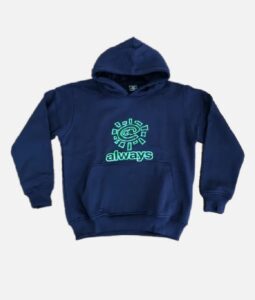Plain Lawn Tassel: A Blend of Simplicity and Elegance
Introduction to Plain Lawn Tassels
The plain lawn tassel is a unique blend of understated elegance and versatile utility. Widely used in home décor, fashion, and accessories, it combines simplicity with style, making it a favored choice for minimalistic aesthetics. This decorative element not only enhances the appeal of the fabric but also adds functionality, allowing it to adapt to various uses.
Historical Perspective on Tassels
Tassels have a storied history that spans centuries, appearing in different forms across various cultures. They were initially crafted by hand, with materials ranging from silk to wool, and held symbolic meanings in ancient civilizations. In ancient Egypt, tassels were seen as protective charms, often included in clothing and ceremonial attire. The intricate designs reflected the wearer’s social status and spiritual beliefs.
In medieval Europe, tassels became an essential feature in ecclesiastical garments and home furnishings, symbolizing wealth and prestige. The French term “passementerie” emerged during this period, referring to elaborate decorative trimmings that often included tassels. By the 17th and 18th centuries, tassels were mass-produced and widely used in curtains, furniture, and garments.
The Evolution of Lawn Fabric
Lawn fabric, a lightweight and fine cotton material, traces its roots back to the city of Laon in France, where it was initially produced. The fabric gained popularity for its soft texture, breathability, and versatility. Lawn became a staple for summer wear, appreciated for its ability to retain intricate embroidery and patterns. Combining lawn fabric with tassels emerged as a natural evolution, offering a functional yet decorative touch to garments and accessories.
Emergence of Plain Lawn Tassels
The plain lawn tassel gained prominence in the late 19th and early 20th centuries as an affordable and accessible option for both fashion and home décor. Unlike ornate tassels made of silk or velvet, plain lawn tassels emphasized practicality and simplicity. They were used in everyday clothing, adding subtle embellishments to scarves, shawls, and dresses.
In the realm of interior design, plain lawn tassels became popular for curtains and table linens, providing an understated elegance to household items. Their lightweight nature made them ideal for use in airy, breezy environments, complementing the delicate texture of lawn fabric.
Attention:Plain lawn tassels are a unique and elegant decorative element, often seen in fashion, home décor, and accessories.
The Role of Tassels in Fashion
The use of plain lawn tassels in fashion is both practical and aesthetic. They serve as embellishments that accentuate the design of garments, adding movement and texture. Tassels are often found on the edges of dupattas, shawls, and even kurta hemlines, creating a blend of traditional and contemporary styles.
In modern fashion, plain lawn tassels have also been incorporated into accessories such as handbags, earrings, and shoes, showcasing their adaptability. The minimalistic design of these tassels appeals to those who prefer a refined and subtle aesthetic.
Cultural Significance
Across South Asia, plain lawn tassels have a cultural significance, often seen in traditional attire. In countries like Pakistan and India, they are used in bridal wear, casual outfits, and festive clothing. The tassels are sometimes dyed in vibrant colors to match the fabric, creating a cohesive and appealing look.
Their role extends beyond fashion, as they are used in ceremonial decorations and religious events, symbolizing festivity and joy.
The Making of Plain Lawn Tassels
Crafting plain lawn tassels involves a straightforward yet meticulous process. Strips of lawn fabric are cut to the desired length and folded to form a bundle. A thread is then wrapped around the top portion of the bundle to secure it, creating the “head” of the tassel. The ends are trimmed to achieve uniformity.
This process can be done by hand or with the help of machines, depending on the scale of production. The simplicity of the design allows for customization, with variations in size, color, and finishing techniques.
The Appeal of Simplicity
One of the primary reasons for the enduring popularity of plain lawn tassels is their simplicity. They offer a minimalist charm that complements a wide range of styles, from rustic to modern. This versatility makes them a preferred choice for designers and artisans looking to add a subtle decorative touch without overwhelming the overall design.
Modern Applications
Today, plain lawn tassels are used in a variety of settings, including:
1. Home Décor: Enhancing the edges of curtains, table runners, and cushion covers.
2. Fashion: Adorning scarves, dupattas, and lightweight garments.
3. Accessories: Adding flair to handbags, keychains, and jewelry.
4. Craft Projects: Used in DIY projects to create unique and personalized items.
Sustainability and Eco-Friendliness
As the demand for sustainable and eco-friendly products grows, plain lawn tassels have gained attention for their environmental benefits. Made from natural fibers, lawn fabric is biodegradable and less resource-intensive compared to synthetic materials. This makes plain lawn tassels a sustainable choice for conscious consumers.
Conclusion
The plain lawn tassel is a testament to the beauty of simplicity. Its rich history and cultural significance, combined with its modern versatility, make it a timeless decorative element. Whether used in fashion, home décor, or accessories, plain lawn tassels continue to charm with their understated elegance and functional appeal.











